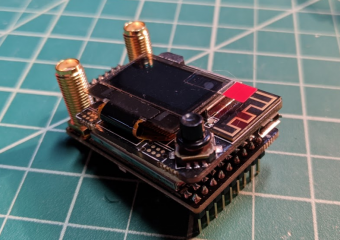Mike Chin, a wizard at TBS has compiled a description of LQ.
Why LQ on Crossfire and what does it mean?
Crossfire is a much different system than the Traditional RC systems you have likely previously used in RC. It offers a lot more information for you to be able to Pilot your craft and know what’s going on, especially with how strong your link is. LQ = Link Quality, this is the parameter that matters on crossfire to tell how strong your connection to your receiver isRSSI= Raw Signal Strength Indicator- while this is a useful parameter for someone who is experienced, for MOST pilots this reading will only confuse you, especially if you are coming from Frsky who uses RSSI as their indicator for link.
When do I turn around using LQ? = 70%.
A good analogy for this is to think of the Crossfire Receiver as a pair of ears, and the Transmitter as a loudspeaker. The TBS crossfire receiver has super sensitive superpower ears. At range the loud speaker may have a low volume(RSSI) but the receiver can still hear the loudspeaker and understand everything its saying(LQ). Why do I use LQ instead of RSSI on crossfire? To know the range limit based on RSSI the noise floor needs to be known as well. Noise floor depends on the environment and on the components built-in the airframe. If you are not so familiar with how RSSI works we recommend to use LQ.It seems most people coming from frsky do not understand how rssi works. its not a linear number, if you’re looking for a good indication of signal LQ is what you should be monitoring on crossfire. 300% is maximum lq, 100% is when it switches to 50hz, and you do not need to turn around till 70%. LQ is always higher than RSSI. RSSI is a logarithmic function, while LQ is a strong exponential. So, LQ remains at a high percentage and then drops off rapidly. RSSI drops off rapidly first, and then decreases more and more slowly. at 50% of your range, LQ will be 100% and RSSI will be at 10-15%.Previously on Betaflight, the LQ would only show a maximum of 99%, you still turned around at 70% but you couldn’t see the fluctuations between 150hz mode and 50hz mode reliably. Now that we have 300% and the new 0:x 1:X 2:X to display, you can see the fluctuations. additionally, keep in mind that small losses in 150Hz mode are perfectly normal. they should remain within 10% on normal flying.
LQ on Betaflight
This is confusing a lot of people new to crossfire and with the recent changes to betaflight even some experienced pilots seem to be confused by what the Betaflight OSD is telling them.There are 2 different ways of showing LQ on Betaflight
- the original way (BF 3.5.7 or earlier and Current DJI) it uses the Betaflight osd element “Rssi” and you would send LQ down a channel from the RX. This is actually the Current way to do it on a DJI video system, this will show a maximum LQ of 99% turn around is 70%https://youtu.be/3542fuE_bag
- The new way post Betaflight 4.0 – you do not need to change any setting on the channels, just hook up crossfire how you normally would to the FC and betaflight can read your LQ automatically
Betaflight has had 3 different ways of showing LQ
- 3.5.7- DJI – this will show as a metric to 99% turn around is 70%
- BF 4.1 – this will show up to 300% turn around is 70%
- BF 4.2 and later – this is a tad more complicated but gives great information
- 0: 70-100 (4hz mode, Forced Telemetry enabled. DON’T DO THAT)
- 1: 100 (50Hz mode)
- 2: 100 (150 Hz mode)
What this shows is the RF mode you are in and the % of that mode. For example 2:100 would be full signal at 150hz (when you see a 2:x you don’t need to worry about your signal at all, you are in 150hz mode and have TONS of range left) . 1:100 would show you switched to 50hz (this will happen moderately early at range, do not be worried, the main range beyond around 2-5 miles is in 50hz. Turn around for this would be 1:70 on the Betaflight OSD. This means you are at 70% LQ and it is time to turn around.




